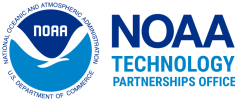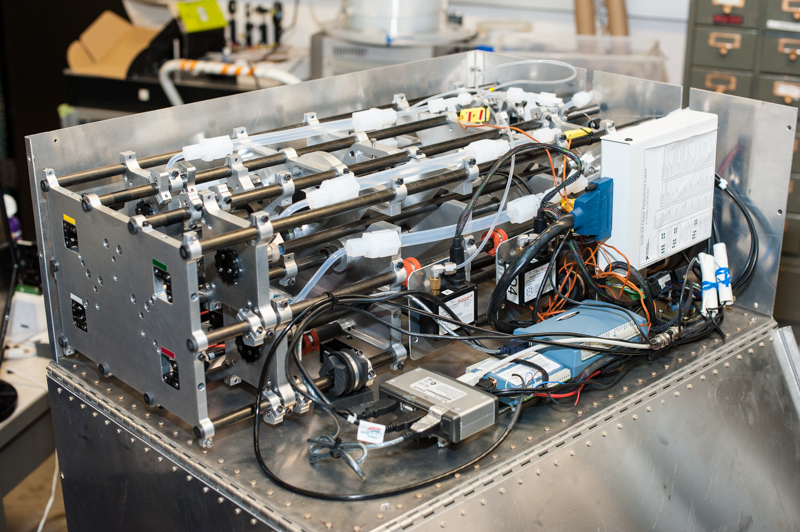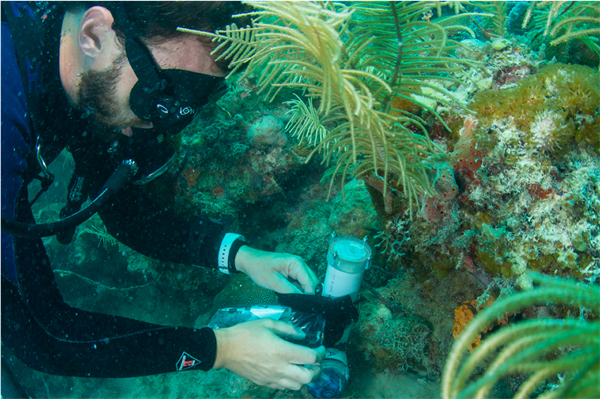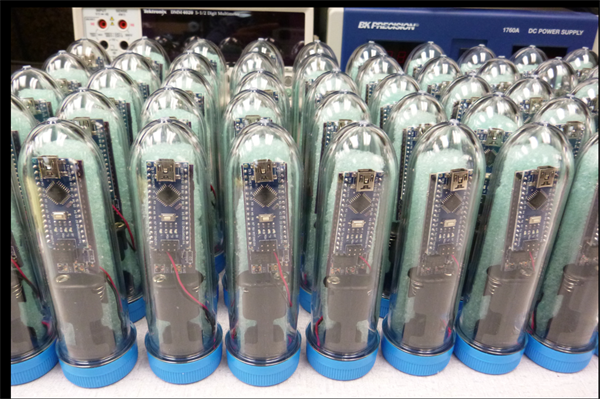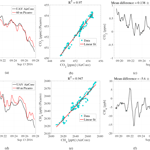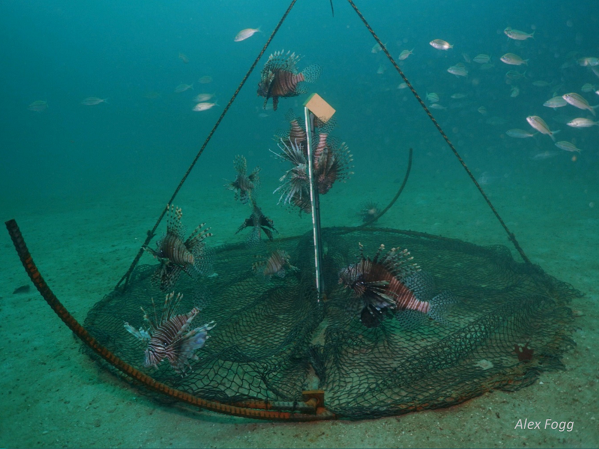Device could help protect threatened ecosystems and aid fishing communities The Challenge Over the last 20 years, invasive lionfish populations have dramatically increased throughout the western Atlantic Ocean, Gulf of Mexico, and Caribbean Sea. Lionfish have already caused a decline in native species that have significant ecological, cultural, and commercial value. Further impacts on coral reefs and other important ecosystems are anticipated, but not yet fully understood. Fortunately, as the threat of lionfish has intensified, so too have the levels of awareness and concern among not just scientists and fishers, but among members of the public. In recent years, state-sponsored lionfish fishing derbies have incentivized divers to remove lionfish from coastal waters, and the growing demand for this tasty and widely-promoted sustainable seafood has surpassed the supply. Although spearfishing has proven to be an effective approach for managing populations in shallow areas, lionfish remain uncontrolled in deeper waters, where they continue to threaten fragile ecosystems (and evade dinner plates). Therefore, there is a demonstrated need and resounding demand for effective, non-destructive ways to capture lionfish that linger beyond recreational scuba depths. Innovative Solution NOAA’s recently-patented lionfish trap could be a solution that offers both ecological and commercial benefits. The trap is shaped like a change purse and is constructed primarily out of a hinged steel frame, attached netting, and a centrally-located vertical panel called a “fish attraction device.” Once deployed from the surface, the lionfish trap descends vertically through the water until it hits the bottom, where two curved extensions cause the jaws to spring open and lay flat on the bottom. The fish attraction device is then revealed, drawing lionfish towards the center of the six-foot diameter net. Later, the trap can be recovered by pulling on a surface line, which closes the trap’s hinged jaws and captures the fish within the ring of netting. This innovative technology was designed with specific operational and conservation-related goals in mind, and as a result, has several benefits over conventional fish traps. For example, the lionfish trap’s open non-containment design prevents “ghost fishing,” which is when gear “continues to fish” after being lost or abandoned. The lack of bait in the trap minimizes by-catch, or the capture of unwanted fish. Furthermore, the trap causes minimal damage to the ocean floor, is easily transportable on fishing boats due to its flat design, and is relatively simple to construct, deploy, and retrieve. Pathway to Patent The lionfish trap was invented by Dr. Steve Gittings, who serves as the Chief Scientist of NOAA’s National Marine Sanctuary Program. Gittings first had the idea for the trap in 2014, after attending a colleague’s presentation about modifying lobster traps so they could be used for deep-water lionfish capture. In the presentation photos, Gittings noticed that lionfish were present, but far more were hovering around the trap than inside it, and that inspired the idea to design a trap that would take advantage of lionfishes’ tendency to aggregate around vertical structures. “It started in my garage as a PVC cube,” said Gittings, who describes himself as a “Garagineer”. Over the next couple of years, the invention progressed through several phases of design and testing, during which the trap was modified to be less bulky, easier to deploy, and more enticing to lionfish. Throughout the process, Gittings engaged recreational and commercial fishermen from numerous places, including Florida, North Carolina, Aruba, Mexico, and Belize. Incorporating the input and expertise of these partners allowed Gittings to improve the lionfish trap so that it meets everyone’s needs. In addition to NOAA, much of the testing of the trap prototypes was supported by donations and funds from Lionfish University, ReefSave, and the Florida Fish and Wildlife Conservation Commission, and involved numerous volunteers and graduate students. The patent for Gittings’ trap, formally known as the “Apparatus for Harvesting Lionfish,” was filed in April 2018 and issued in February 2021. The Role of Technology Transfer Initially, Gittings did not consider patenting the trap. He explained, “My interest in developing these traps, as a civil servant, was to keep it as open-source as possible, so that anybody can use these to not only help support their fishermen, but to protect ecosystems around the Caribbean.” Gittings reached out to NOAA’s Technology Partnerships Office (TPO) after a colleague recommended that he speak with someone about potentially patenting the trap. TPO is NOAA’s research-to-commercialization office. Among other functions, TPO helps NOAA inventors patent their scientific and technological innovations and transfer them into the commercial marketplace, where they can more broadly impact ecosystems, communities, and economies. After speaking with TPO’s Technology Transfer Program Manager, as well as a representative from the National Institute of Standards and Technology (NIST) General Counsel Office, Gittings said he realized the best way to continue testing and improving the trap so that he could accomplish his goals was to “get control over the trap through patenting so that nobody else could stop us.” Gittings expressed gratitude for the support he received during the process of filing for the patent. “They interpreted everything I told them, going through every detail of the trap, and then put them on paper in language that the Patent Office understands. It was absolutely essential to have them do that work.” Looking Ahead Gittings’ long-term vision for the lionfish traps, should they prove to be an effective conservation method, is for fishers to use the traps outside of their primary fishing season. In using these lionfish traps, he said, “The fishermen would be supplementing their income and doing conservation at the same time.” Gittings added that a supplemental fishery targeting lionfish could also reduce the pressure on native species, such as snapper and grouper, which are overfished in some areas. And commercial use of the trap would provide an environmentally-friendly and reliable harvest for the seafood industry and its hungry customers. If the lionfish trap is successful, it will serve as another example of how technology transfer at NOAA contributes to realizing the agency’s guiding vision of healthy and resilient ecosystems, communities, and economies. The next step is to determine whether the traps are effective for controlling lionfish populations in deep water habitats. The prototypes were tested at depths of about 100 feet, but lionfish can be very abundant down to several hundred feet below the surface. In October 2020, the Reef Environmental Education Foundation (REEF) received a NOAA Saltonstall-Kennedy Competitive Grant to pursue this research and commercialization testing. REEF plans to collaborate with members of the Florida Keys lobster fishing community to test and improve various aspects of trap design, deployment, and long-term effectiveness.
